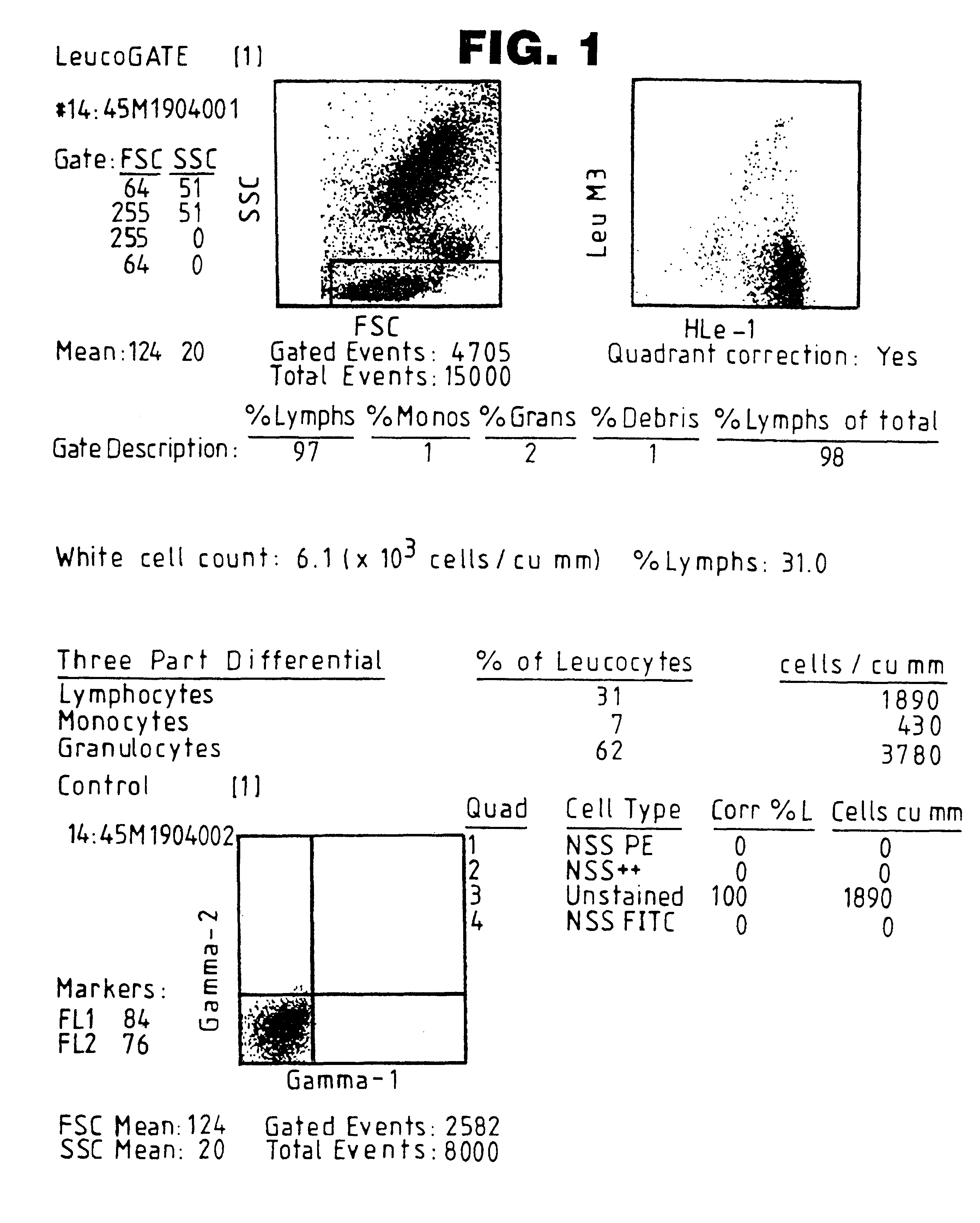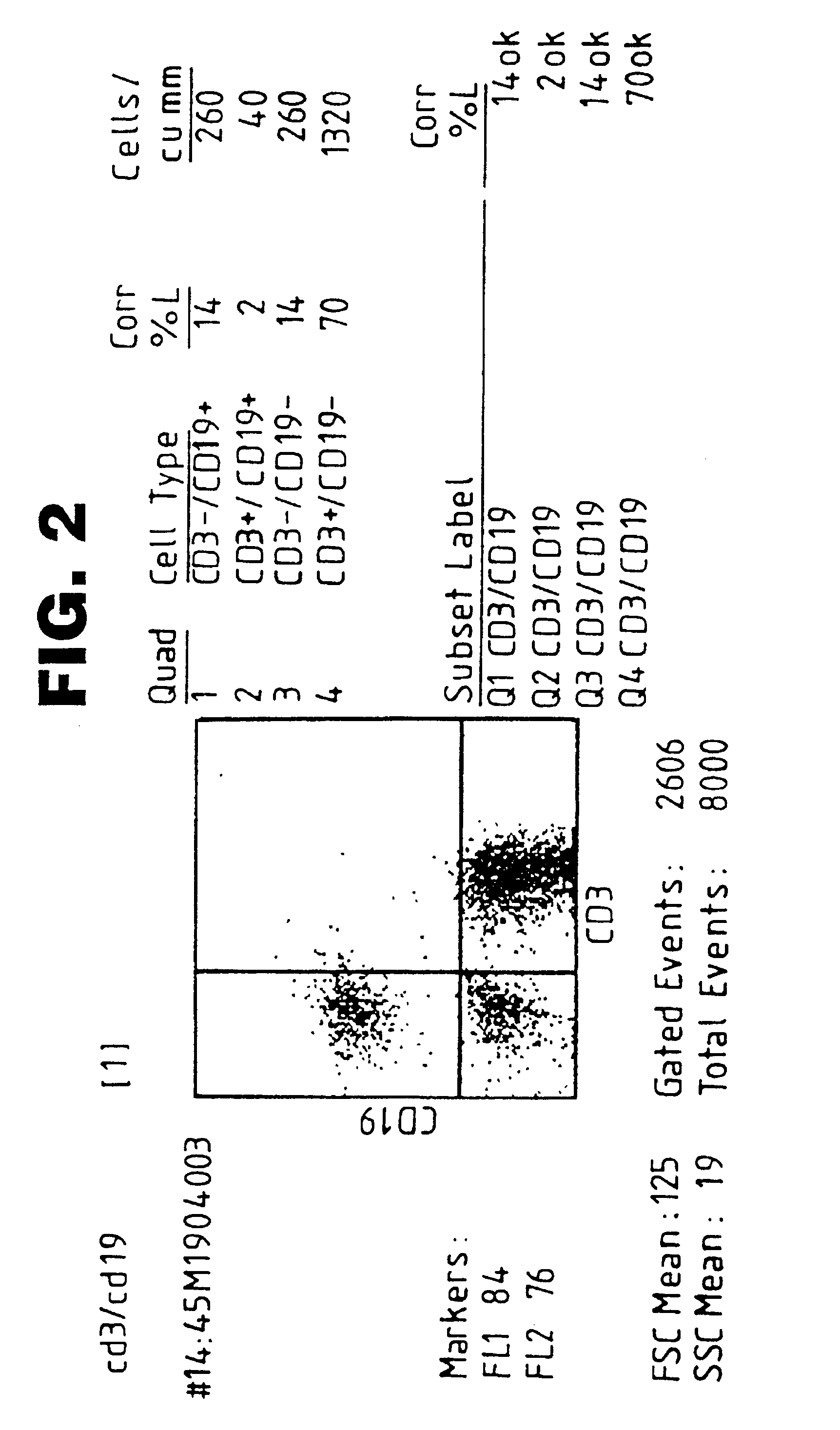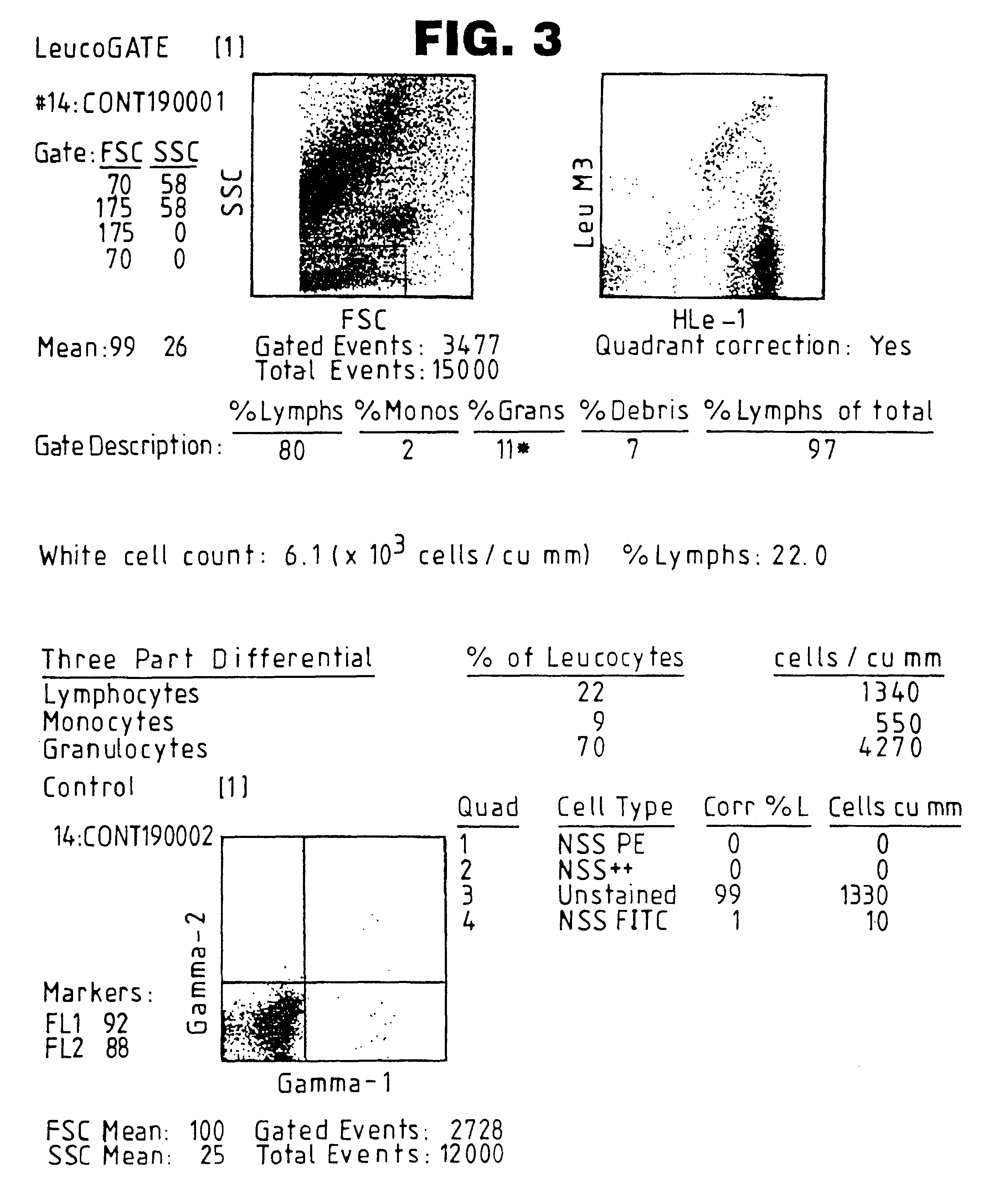Specimen collection fluid
a technology for specimen collection and fluid, which is applied in the field of improved specimen collection stabilisation fluid, can solve the problems of inability to meet the needs of specimen collection, considerable dilution of specimen, and difficult interpretation of subsequent immunohaematological analysis, and achieves substantial deterioration of antigen, facilitates specimen transportation over long time, and maintains peripheral blood parameters. substantial stability
- Summary
- Abstract
- Description
- Claims
- Application Information
AI Technical Summary
Benefits of technology
Problems solved by technology
Method used
Image
Examples
example 2
A specimen collection fluid is made up comprising a sterile aqueous solution containing the following components by weight:
The pH of the solution is adjusted to 7.4 and a heavy precipitate is formed. The solution is centrifuged at 1200 g to separate the precipitate from the supernatant. The supernatant is removed and filtered to remove any remaining particles.
K.sub.3 EDTA is added to make a final concentration of 0.34 Molar and the solution filtered again. 54 .mu.l of the solution is placed in a 4.5 ml glass specimen collection tube. Blood drawn by venepuncture is immediately placed into the tube. The tubes contents are thoroughly mixed by inversion, to anticoagulate the fresh blood and initiate the stabilisation process. The tube is stored preferably at 4.degree. C. and the contents allowed to warm up to room temperature before testing.
The specimen is tested on a Becton Dickinson flow cytometer after 5 days and compared to an unstabilised control. The results for CD45+ staining and...
PUM
 Login to View More
Login to View More Abstract
Description
Claims
Application Information
 Login to View More
Login to View More - R&D
- Intellectual Property
- Life Sciences
- Materials
- Tech Scout
- Unparalleled Data Quality
- Higher Quality Content
- 60% Fewer Hallucinations
Browse by: Latest US Patents, China's latest patents, Technical Efficacy Thesaurus, Application Domain, Technology Topic, Popular Technical Reports.
© 2025 PatSnap. All rights reserved.Legal|Privacy policy|Modern Slavery Act Transparency Statement|Sitemap|About US| Contact US: help@patsnap.com



